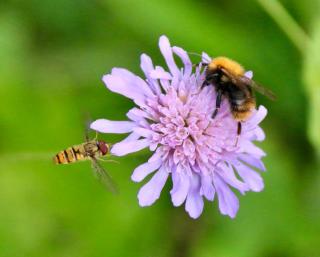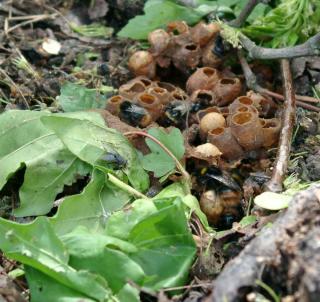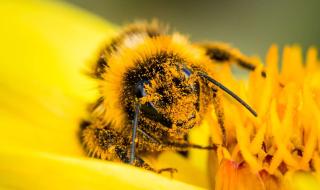

A voluminous body, a louder-than-usual buzz, and colorful fuzz all around – the bumblebee is easy to identify! A particularly active beneficial insect in the garden, it is a diligent pollinator that runs in the same class as the common honeybee: the heavyweight class!
In the vegetable patch, growers of tomato plants find it extremely helpful, since its physical characteristics render special services to the famous red-fruited veggie-fruit.
Read also:
This insect is part of the Hymenoptera family. It’s easy to identify:

The nest has a queen, worker bumblebees, male drones and fertile females. These females are the only ones to survive once Winter comes along. They hibernate as temperatures drop, waiting for more auspicious weather. That’s the time when they’ll be fulfilling their destiny: creating their own nest.
Did you know… ?
The bumblebee can modify the electrical field of flowers it visits. This helps inform other bumblebees that there’s no need to visit it again. A great way to maximize their time harvesting pollen! (Source: Science & Vie n°1148, avril 2013)
When the time has come for queens to establish their nest, they pick very different and surprising locations:
 burrows that badgers and mice might have abandoned;
burrows that badgers and mice might have abandoned;For hibernation, the young, fertilized females take refuge under moss, dead leaves, in a hole in a branch or wall.
Just like the mason and the common honeybee, the bumblebee is a tireless pollinator. Its main assets, compared to its bee cousins, are its size and the strength of its wings.

The other point of interest is that bumblebees can work even while other pollinators stay dormant. Indeed, its thick fuzz protects it from the cold, which helps it start hopping from one flower to the next much earlier in the season and every morning, too. When the air is cool just after a spring rain shower, the bumblebee is often the first to set out again to fetch the pollen of freshly opened flowers.
This formidable beneficial insect just checks what’s available, and, if suitable, builds a nest there. There’s no need to set up shelter for it. However, you can let a portion of your garden or vegetable patch grow wild. It’ll prefer that to settle down and feed as it wishes.
Lastly, to make the bumblebee’s (short) life easier, you can just try to provide it with enough food from diversified sources. For that, sow or plant early-blooming plants such as willow or hazel for instance. These will furnish much-needed pollen and food to young queens emerging from hibernation.
Even though it will pollinate any flower it comes by, the bumblebee is particularly attracted to certain flowers like:
Did you know…?
Even though it has a stinger, the bumblebee isn’t very aggressive and it’ll only seldom sting.
Read also: